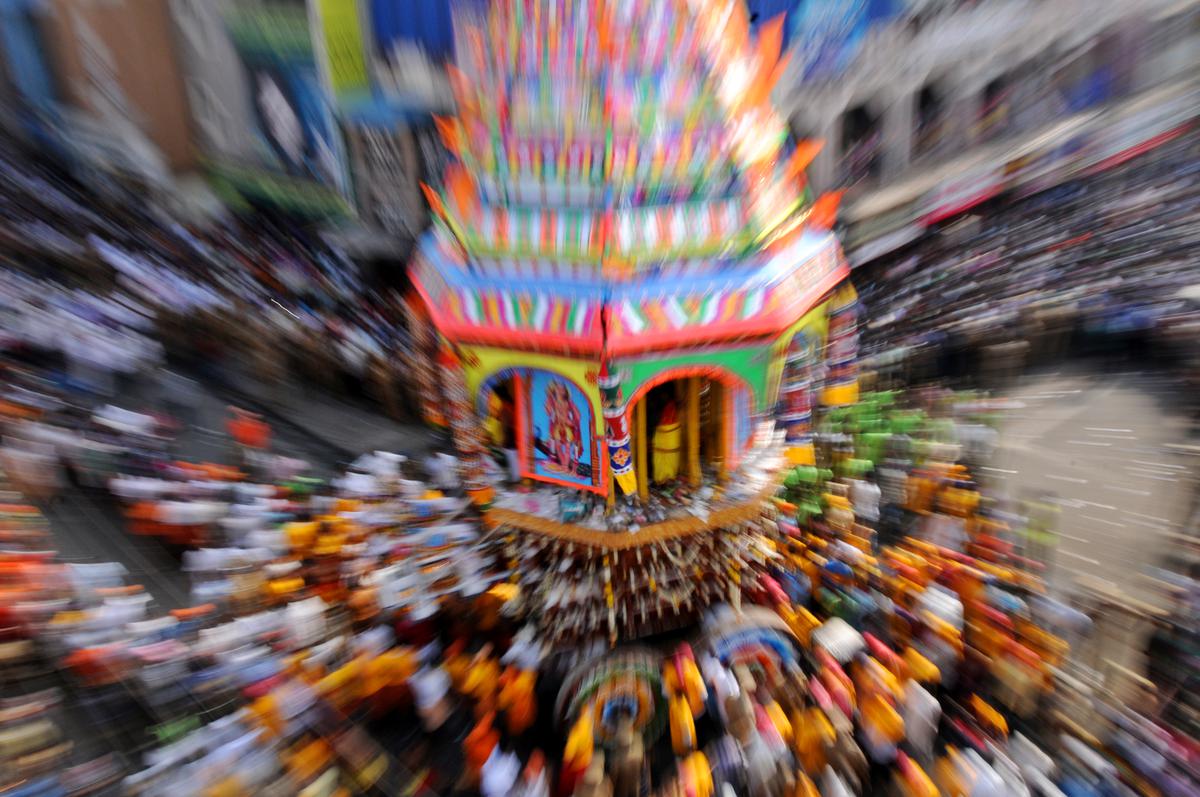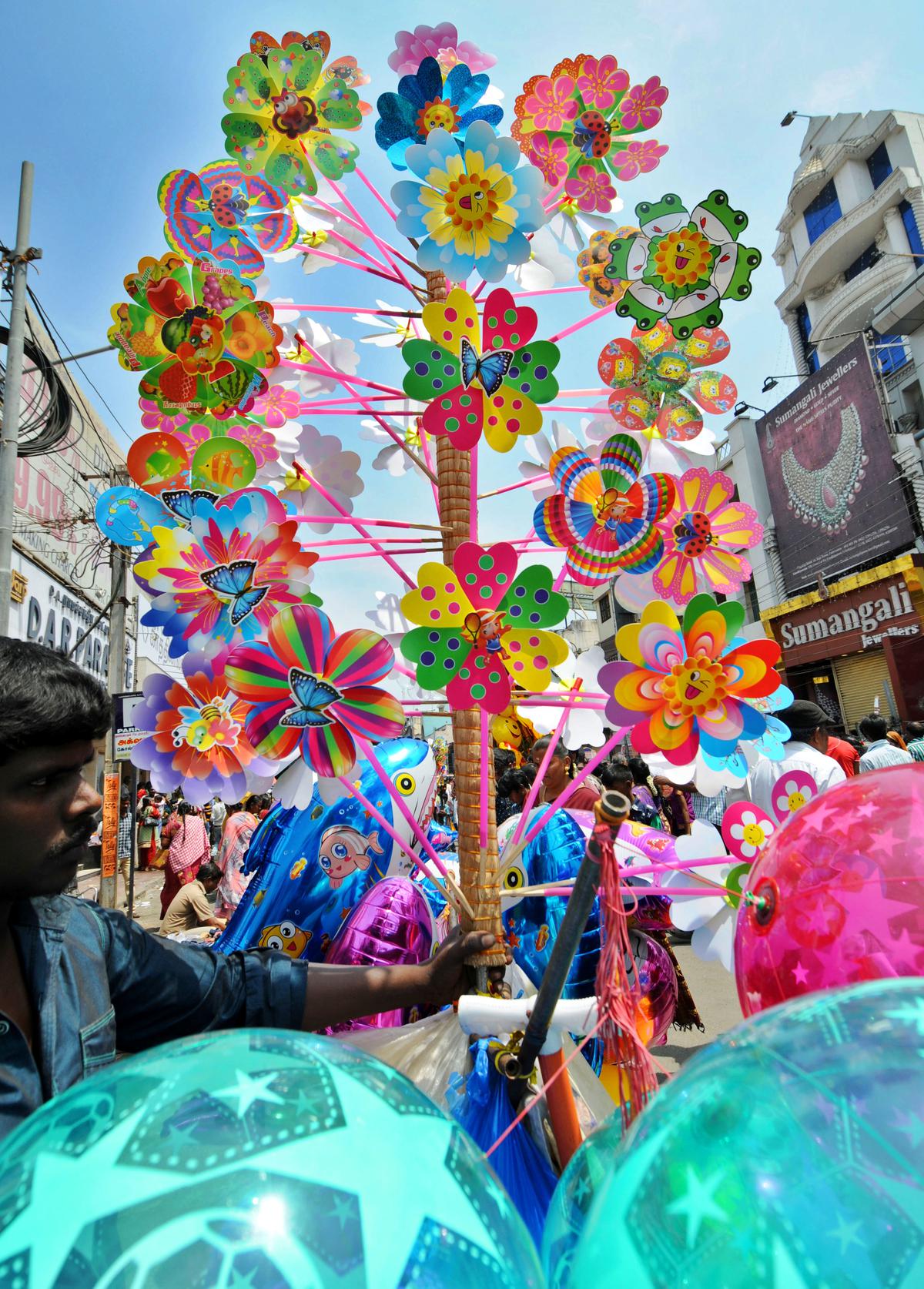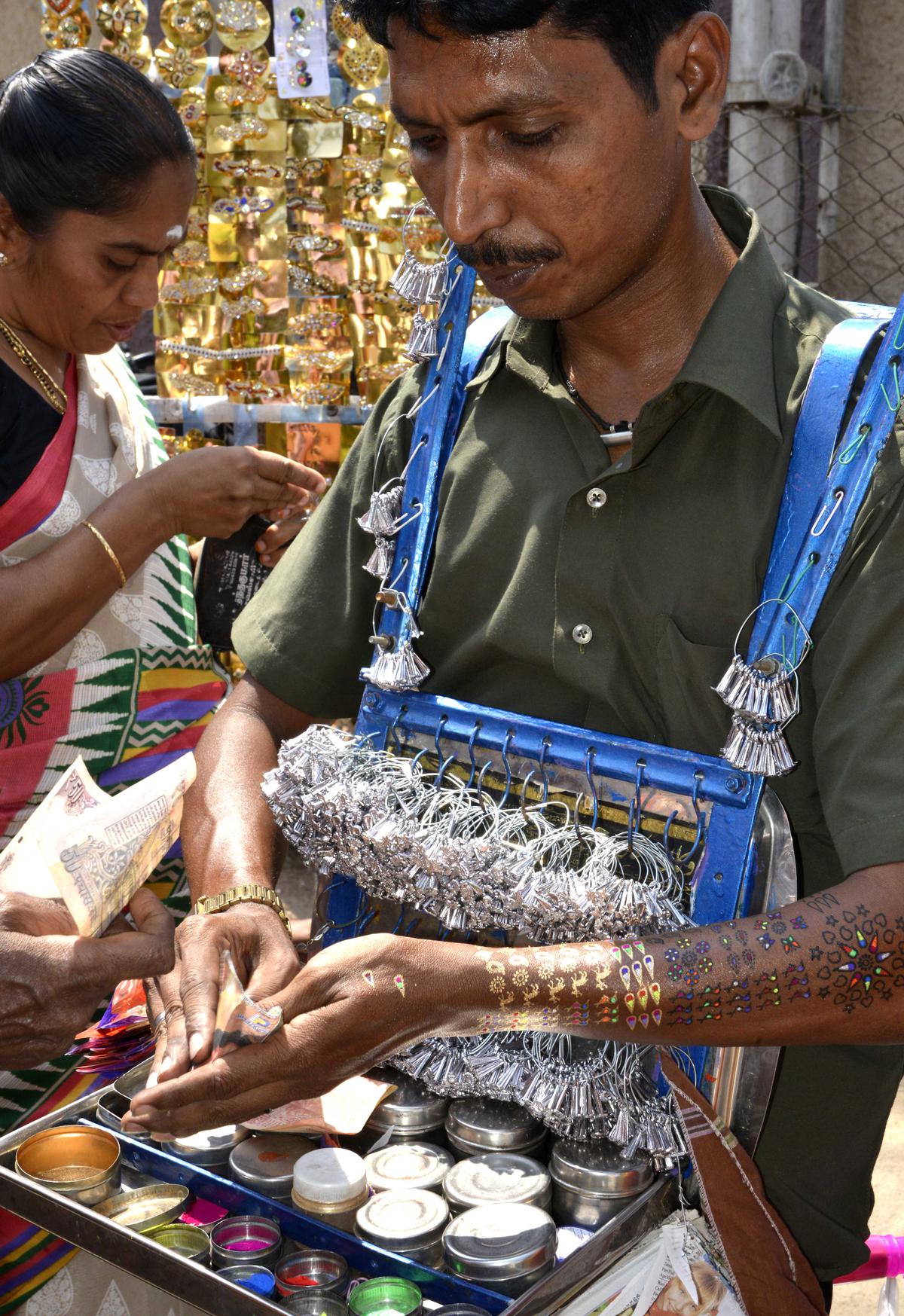[ad_1]

Koniamman Temple car festival, 2023
| Photo Credit: PERIASAMY M
The temple car gleams in the sun: its wooden exteriors have been polished, the small metal bells hanging from its sides have been dusted to a sheen. It is time for its yearly sojourn into the city, bearing goddess Koniamman, believed to be the city’s guardian deity. It is a hot afternoon at Thermutti on Raja Street, where the temple car stands. A mother and her little girl walk inside the fenced-in area to look at it up-close. On February 28 though, they cannot get anywhere near it.
The Koniamman temple car festival, an annual spectacle that attracts thousands of people, is an important event in the city. The temple car, that sports gigantic wooden wheels, will be hand-pulled through Raja Street, Oppanakara Street, Vysial Street and Karuppa Gounder Street, before making its way back to Thermutti.

Devotees drawing the car during the Koniamman temple festival in 2017
| Photo Credit:
PERIASAMY M
For a lot of people in the city, attending the festival is a yearly ritual, one than has to do with devotion as well as nostalgia. According to city chronicler Rajesh Govindarajulu, the temple car festival dates back to hundreds of years. He remembers waiting to see the car during his boyhood years at his ancestral home on Vysial Street. “The car would stop in front of our house and my great grandfather would take us near it. We would offer fruits and flowers that would be taken up through a rope,” recalls the 55-year-old, adding: “All the old traders and people living on the car’s route will line up along the road to pray to the deity.”
A concrete platform stands next to the car at Thermutti, through which the deity is taken inside. This structure bears an inscription with the name V S Sengottiah, who built it in 1942. Sengottiah, a philanthropist, owned the popular Sarada Mills at Kurichi in the city. “His family is still involved in maintaining the temple car,” points out Rajesh.

A trader sells hand fans on Raja Street during the festival
| Photo Credit:
PERIASAMY M
VSLV Sengottian, Sengottiah’s great grandson, remembers the fanfare with which the car would be decked up with flowers and thoranams made of mango leaves ahead of the festival. “The platform would get a fresh coat of limewash as well,” says the 62-year-old, adding that their family continues with the tradition that his great grandfather started.
Traffic diversions are the order of the day, so are power cuts at areas through which the car traverses, and holidays for schools in the vicinity. N Sundararajan, who is based in Vincent Colony in the city, remembers his father NV Narayanaswamy, a Municipal Electrical Engineer in the city from 1946 and 1949, walking along with the car to maintain electrical safety. “He ensured power lines were far removed from the tip of the temple car as it moved, and that power was restored once it passed through,” he says.

Street vendors doing brisk business on Raja Street
| Photo Credit:
The Hindu
Some business families who lived in the neighbourhood, made it a point to walk along with the car. “This included KSM Guruswamy, who owned Guru Hotel [near the Clock Tower], also known as Bangalore Biryani Hotel,” says Rajesh. J Rajalakshmi, Guruswamy’s daughter, remembers the festival being much less-crowded in her school days. “We would wait on the terrace of our hotel to see it,” recalls the 89-year-old, adding that on one occasion, the car tilted as it made its way through Vysial Street. “Fortunately, only one person was injured,” she says.
The festival is also a time when small-scale business people in and around Coimbatore set up shops on the roadside, selling everything from bangles and candy, to balloons and toy whistles.
P Narayani, who sells greens door-to-door on the many cramped lanes behind Thermutti, has been selling rock salt at the festival for 30 years. “People offer salt mixed with a few pepper corns to the deity,” she says, adding that over a hundred such sellers descend on Raja Street on the big day, selling salt in small packets for ₹10.

A walk through Raja Street during the Koniamman ther
| Photo Credit:
Akila Kannadasan
The 65-year-old is all set for business this year too. “I know I’m getting old, and am not as fit as I used to be,” she says. “This work involves being in the sun all day, jostling amidst swelling crowds.” But it is something she enjoys doing. “I arrive at Thermutti at 5am to see the goddess the first thing,” she says. “I then follow the car through the day.” The business aspect of it is only secondary, Narayani says. “I get to see Koniamman all day, be close to her car. Isn’t that something?”
[ad_2]
Source link





